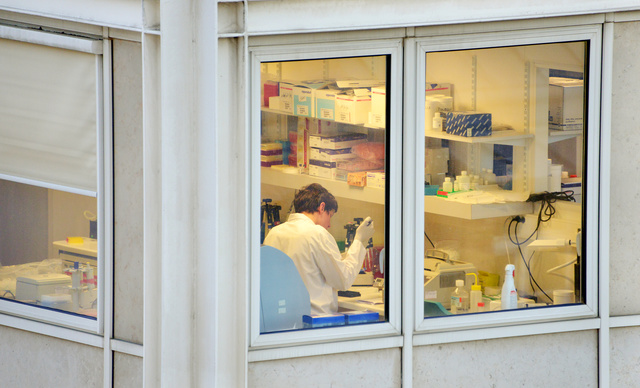2nd SIRIC label
A translational research team in radio-oncology led by Yolanda Prezado was identified and arrived at Institut Curie in September 2019.

2nd SIRIC label: 1 new team created
SIRIC has been recruting and supporting translational research teams addressing important biomedical questions since 2012.
In 2018, an international call for tenders was launched to identiy a new radiobiology team.
Following an evaluation by the scientific advisory board and the SIRIC steering committee, the New Approaches in RAdiotherapy team (NARA), led by Yolanda Prezado, joined Institut Curie in 2019.
An interdisciplinary and international team
Made up of physicians and biologists at the interface of medical physics, IT, and radiobiology, the team works closely with clinicians and has established multiple internationational partnerships in physics, biology and treatment.
Yolanda Prezado obtained an ERC consolidator grant in 2018 and is responsible for the scientific committe of the European Federation of Medical Physics (EFOMP). She is also co-spokesperson for the international biophysics collaboration (IBC) for radiobiology research on particle accelerators.
Exploiting and modulating physical parameters, understanding biology
The team intends to impact care by making the most of rich biological knowledge to create new approaches which would diminish the toxic effect of radiation on normal tissue whilst maintaining, or even improving, the probability of eradicating the tumor.
Their main objective is to contribute to the exploration of the vast "terra incognita" that is how physics (particle type, temporal and spatial fractioning, beam structure) can modulate biological response as well as how to efficiently and quickly use this link for patient treatment.
Towards new modes of irradiation: main factors studied
- Spatial dose fractionation
- Particule type
- Temporal fractionation and beam structure
Bibliography
- Short and long-term evaluation of the impact of proton minibeam radiation therapy on motor, emotional and cognitive functions. C Lamirault, V Doyère, M Juchaux, F Pouzoulet, D Labiod, R Dendale, A Patriarca, C Nauraye, M Le Dudal, G Jouvion, D Hardy, N El Massioui & Y Prezado. Scientific Reports. 2020.
- First proton minibeam radiation therapy treatment plan evaluation. P. Lansonneur, H. Mammar, C. Nauraye, A. Patriarca, E. Hierso, R. Dendale, Y. Prezado and L. De Marzi. Scientific Reports. 2020.
- Advancing proton minibeam radiation therapy: magnetically focussed proton minibeams at a clinical centre. T. Schneider, L. de Marzi, A. Patriarca and Y. Prezado. Scientific Reports. 2020.
- Minibeam Radiation therapy: a micro and nanodosimetry study. M. Dos Santos, R. Delorme, R. Salmon and Y. Prezado. Medica Physica. 2020.
- FLASH and minibeams in radiation therapy: the effect of microstructures on time and space and their potential application to protontherapy. A. Mazal, Y. Prezado, C. Ares, L. De Marzi, A. Patriarca, R. Mirabell, V. Fauvadon. British Journal of Radiology. 2020.
- The Biophysics Collaboration for research at FAIR and other new accelerator facilities. Marco Durante, Yolanda Prezado and Vincenzo Patera. Europhysics News. 2020.
- Tumor Control in RG2 Glioma-Bearing Rats: A Comparison Between Proton Minibeam Therapy and Standard Proton Therapy. Prezado Y, Jouvion G, Guardiola C, Gonzalez W, Juchaux M, Bergs J, Nauraye C, Labiod D, De Marzi L, Pouzoulet F, Patriarca A, Dendale R. International Journal of Radiation Oncology • Biology • Physics. 2019.
- Improving the dose distributions in minibeam radiation therapy: Helium versus proton. Schneider, A. Patriarca and Y. Prezado. Medica Physica. 2019.
